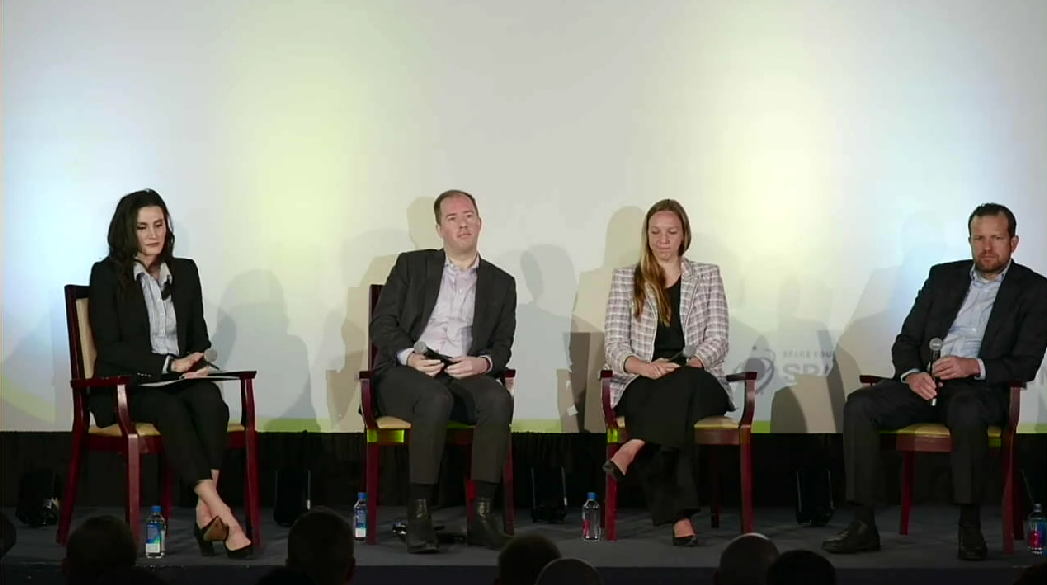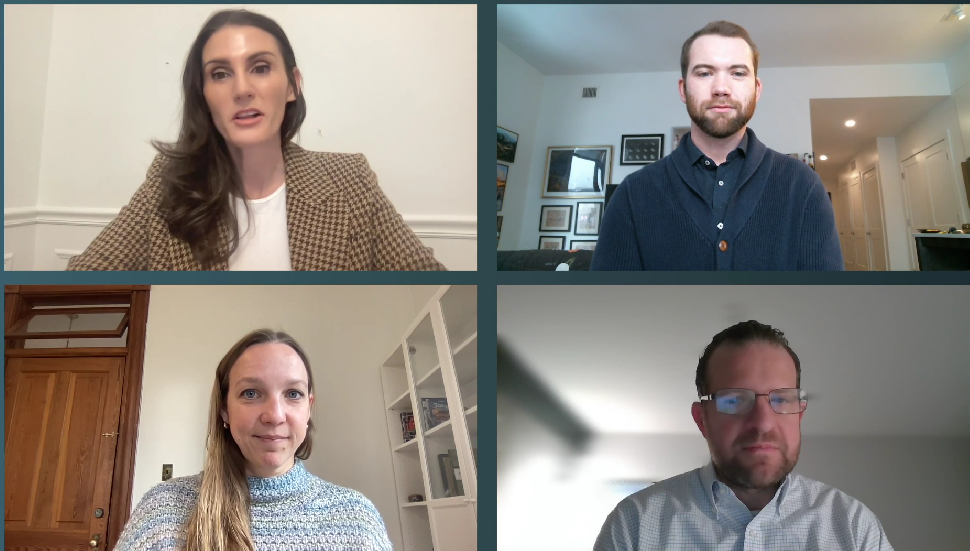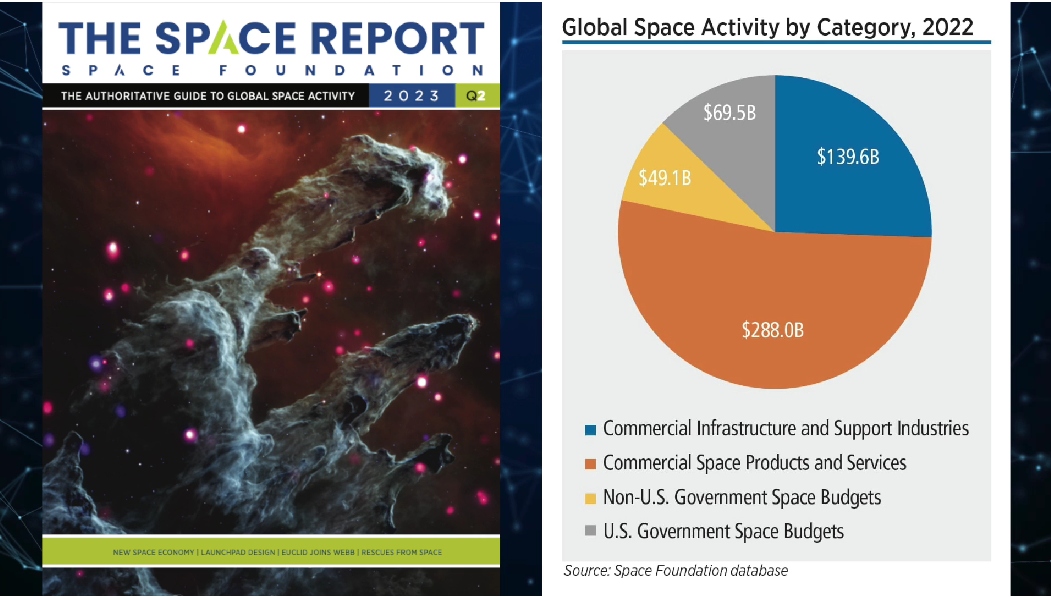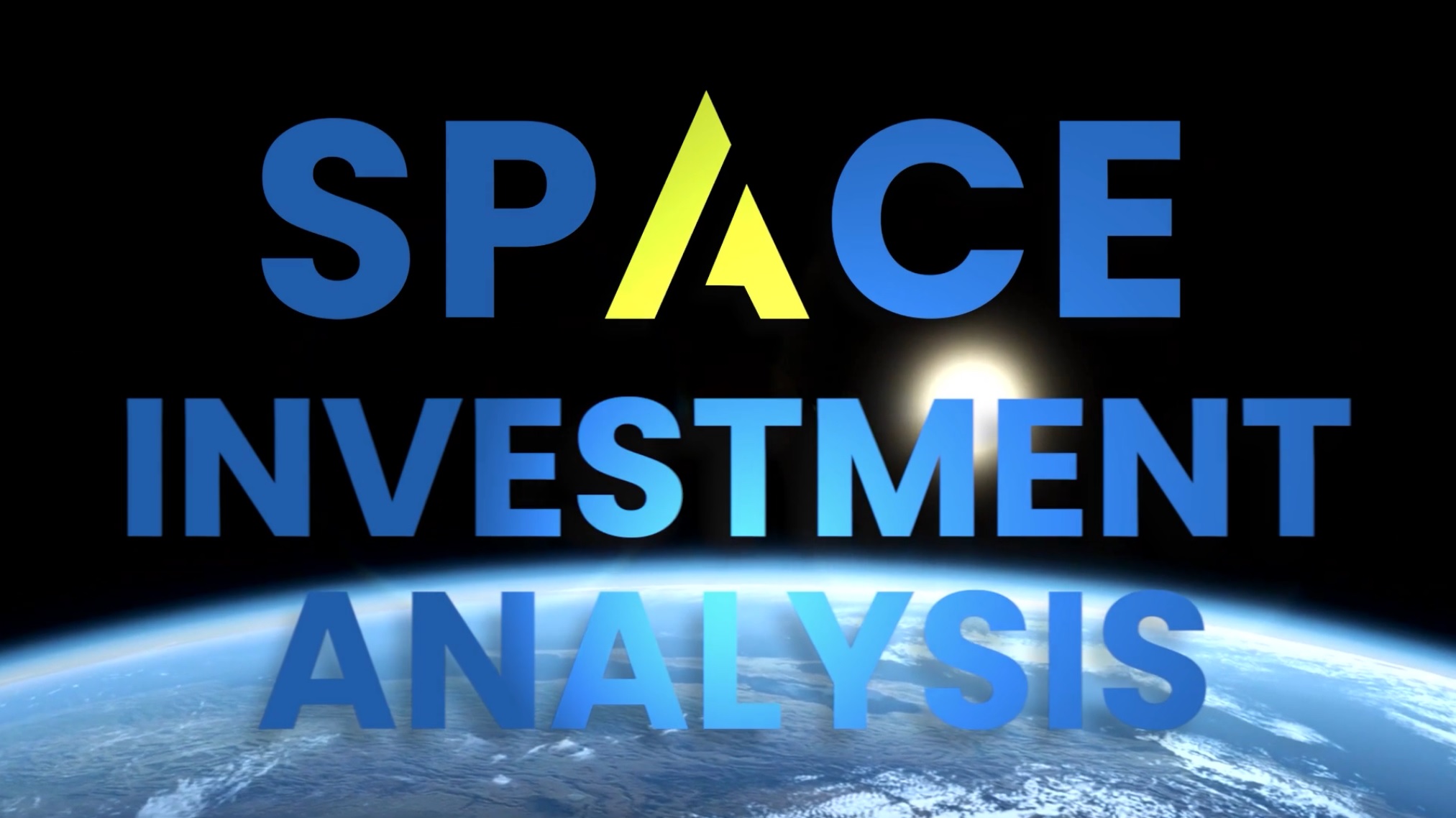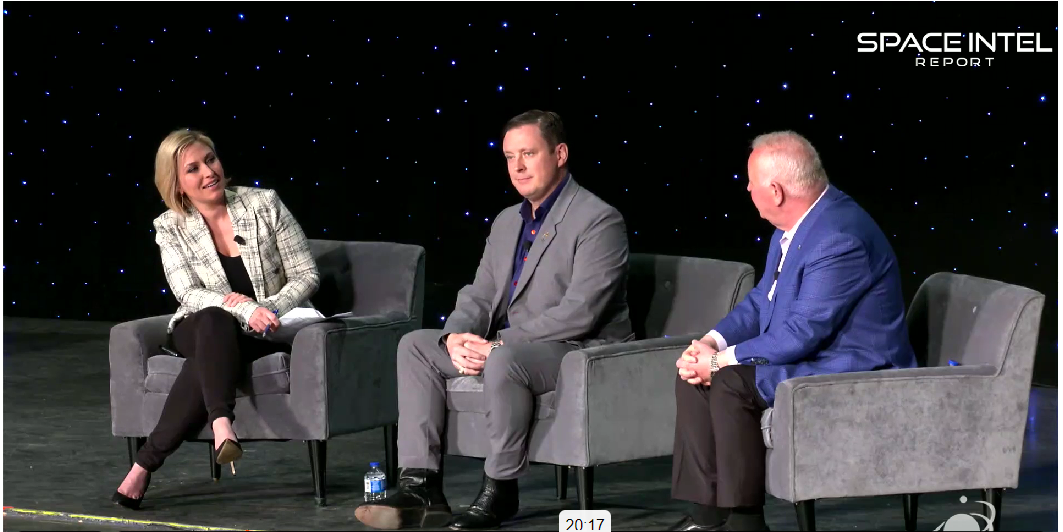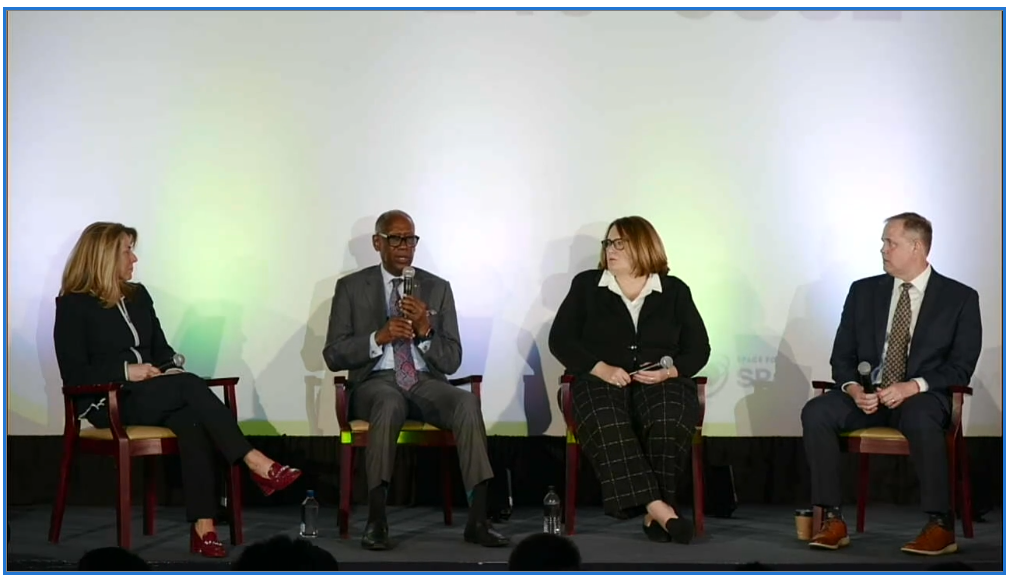‘Urgency and Necessity’ Are Driving Moon Programs and Investor Interest
Originally aired on: November 30, 2023
The continued emergence from disrupted world markets has left space-sector investors more likely to seek demonstrated business capabilities over startup concepts. But new technologies and the progress toward cislunar development should make the downtick short-lived.
That’s the assessment of Space Investment Analysis panelists who convened in November to assess third quarter investment activity as they also looked ahead to developments that promise to drive markets in the months ahead.
In this latest installment of Space Investment Analysis, Kelli Kedis Ogborn, Space Foundation’s vice president of Space Commerce & Entrepreneurship, explores a range of timely issues with Justin Cadman, partner at Quilty Analytics, Mariel Borowitz, associate professor Sam Nunn School of International Affairs at the Georgia Institute of Technology, and Brendan Rosseau, teaching fellow and research associate at Harvard Business School.
One promising aspect: Space technology is increasingly relevant in everyday life, making it easier to attract investment, Rosseau said. Images and information from Earth observation satellites, the growing presence of the Starlink communications constellation and the increased capabilities of satellites to drive data-based decision are only a few examples that are now commonplace. That pervasiveness also informs investor interest, Rosseau said.
“It really matters and it’s accelerating at a really remarkable pace,” he said. “The pitch for space is getting a lot easier these days, which is really nice to see.”
Getting to the lunar surface, once characterized as “a Moon shot” now seems readily achievable, Kedis Ogborn noted, drawing agreement from Borowitz.
“We really see concrete steps happening right now to get us there, and it’s not just NASA or a couple of international partners, it’s countries all around the world,” Borowitz said. “ Whether it’s competition or cooperation or we manage to get hopefully some combination of those, I think it’s a really healthy activity and a healthy way to demonstrate technological capabilities and what the world is capable of.”
For Cadman, interest in returning to the move can be structured along three pillars:
- Creating healthy commercial competition in civil space activities
- National security concerns from the risk of not establishing a U.S. lunar presence
- Investment potential driven by the first two
“The third pillar is the fact that this is becoming a real conversation, that someone doesn’t necessarily raise an eyebrow when you start to talk about the lunar and cislunar economies,” Cadman explained. “Because of those first two pillars, that creates this third pillar where there are actually entrepreneurial ideas and concepts around what one can do if this is real.”
“You can’t get to that goal line if you don’t start the race,” he added.
Rosseau agreed that for the United States, there is a sense of urgency and necessity in returning to the Moon.
“We need to get there,” he said. “We need to do it fast, and we need to do it in a sustained way that involves the efficiencies and innovation that the commercial sector can bring.”
Watch the video to hear more of their discussion about investment, space sustainability and other topics.
MOST RECENT VIDEOS
Symposium Highlights
Late Breaking News: Intuitive Machines Live from Space Symposium 2024
Originally aired on: April 11, 2024
Space Investment Analysis
Symposium Highlights
Space Investment Analysis: Live from the 2024 Space Symposium
Originally aired on: April 8, 2024
Space Matters
Symposium Highlights
Space Matters: Live from the 2024 Space Symposium
Originally aired on: April 8, 2024




